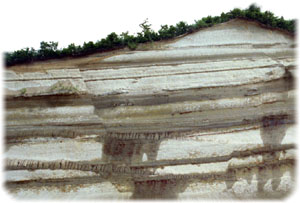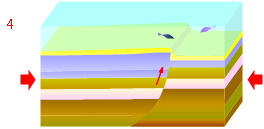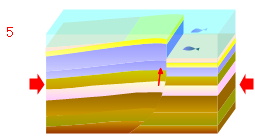Earthquake and Japan
 Japan is located along the subduction zone and many earthquakes happen every year. Earthquake research in Japan becomes one of the big national work involving several branches of government.
Japan is located along the subduction zone and many earthquakes happen every year. Earthquake research in Japan becomes one of the big national work involving several branches of government.
In Japan, earthquake was believed to be induced by huge "catfish" underground in the past days. Today, earthquake is understood to occur when the crust is ruptured along the fault.

In Japan, almost all major earthquake is related to the subduction of the oceanic crust. One of the major types occured between the continental crust and the oceanic crust. The earthquake epicenters of this type are concentrated at the plate boundary. Another major type is caused by active faults in the continental crust. This type of earthquake gained more attention after the Hansin-Kobe Earthquake in 1995. There are remarkable numbers of faults in Japan, some of which are thought to be active and others are non-active. Active fault research in Japan is now in progress to evaluate the risk of earthquake in each fault. In geological map, faults are presented by thick solid lines.
However the state of a fault is changeable reflecting the stress field condition. For example, many faults in the northeastern part of Japan originated as normal faults during the opening of the Japan Sea. Today, these faults reactivate as reverse faults reflecting strong compression by the Pacific Plate against the Northeast Japan arc. 
|





|
Geological Survey of Japan, AIST
- About GSJ
- Our Activities
- Purchase guide
- Publications and Database
- Geological Hazards
-
Learning and Education
- Geology of Japan
- Geological Museum
- GSJ Database Collection
- Collection of links

